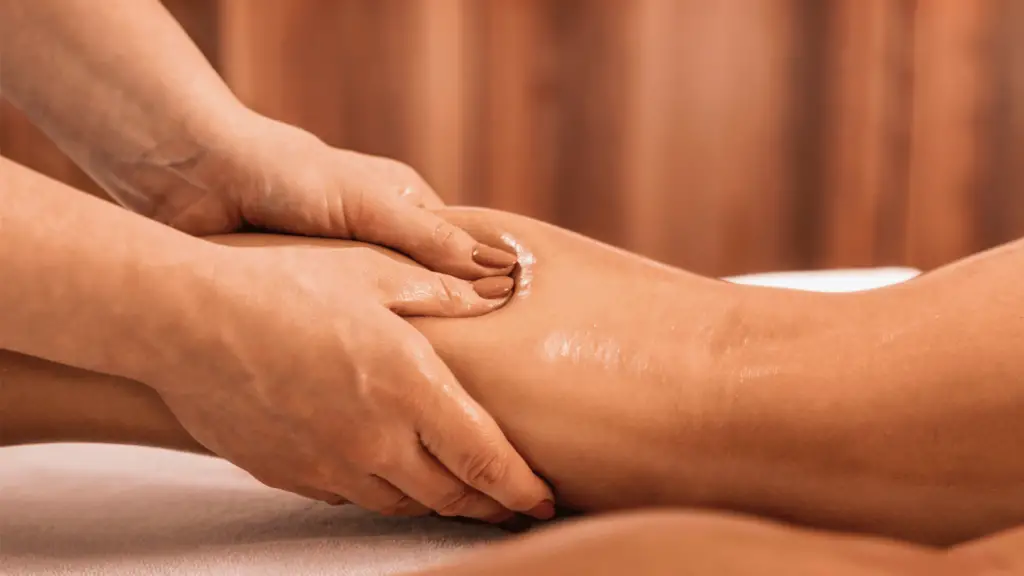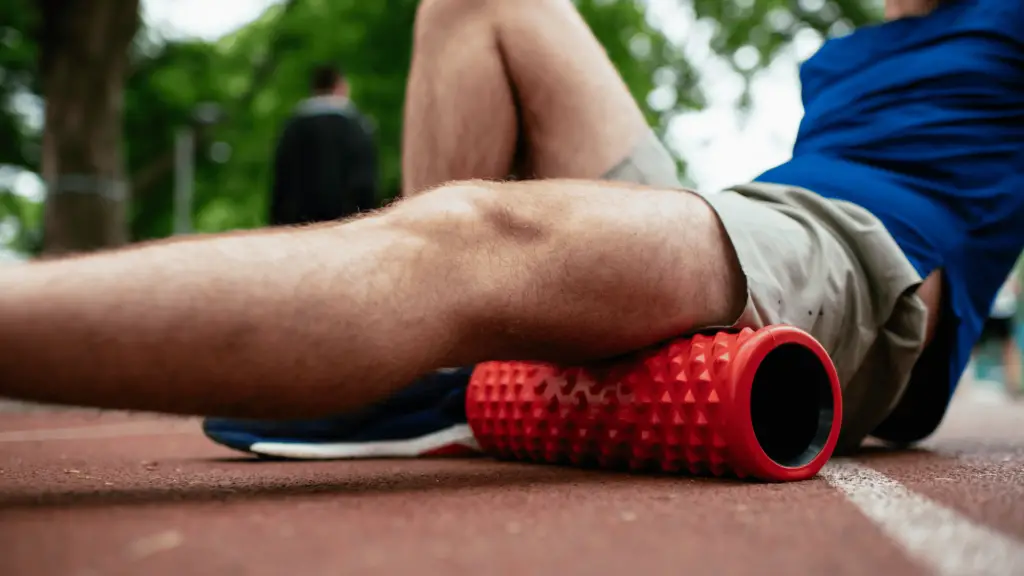It goes without saying that physical activity keeps you healthy. After all, exercising improves your cardio and makes you stronger, improving your physical appearance.
But what about exercise and the lymphatic system? Does working out clean your body from the inside as well?
Continue reading this article to learn about the lymphatic system, the effect of exercise on it, and how to flush it.
The Lymphatic System – A Simple Explanation
The lymphatic system is an integral component of the immune system. It’s made of a complex network of lymphatic channels, capillaries, nodes, plexuses, tissues, and organs.
Additionally, the lymphatic system functions as a secondary circulatory system, following the blood-cardiovascular system.
Both systems are responsible for maintaining body homeostasis. For those who don’t know, homeostasis is a Greek term that means “steady.” That means these complex systems keep your body’s internal physical and chemical reactions stable and in equilibrium.
Although both your cardiovascular and lymphatic systems have similar functions, they also have several differences. For example, the lymphatic system carries lymph fluid in a unidirectional path. Lymph fluid travels from all areas of the body and drains into the bloodstream.
On the other hand, the cardiovascular system is a closed system that transports blood. It always carries blood away from and back into the heart.
Functions of the Lymphatic System
Now that we know the differences between the circulatory and lymphatic systems, let’s look at the major roles the lymphatic system plays in the human body:
- Protects your body against pathogens (It serves as the third line of defense in the immune system.)
- Manages the body fluid levels in your body by collecting fluids that leak from tissues and blood vessels and returning them to the bloodstream.
- Transports, filters, and removes cellular waste products, like proteins, fats, intestinal fluids, and abnormal cells found in the lymphatic fluid.
How Does the Lymphatic System Work?
As you can see, the lymphatic system does a lot for our bodies. The question is this: how does the lymphatic system work?
The short answer is that the organs, vessels, glands, and tissues work together to drain, filter, and recirculate the lymph.
Here’s a detailed explanation of the lymphatic system structures and what they do:
The Lymph
The lymph, also known as the lymphatic fluid, is a white fluid that leaks from tissues and blood vessels. It contains pathogen-attacking white blood cells—lymphocytes—and the other wastes mentioned earlier.
Lymph Capillaries and Vessels
Similar to blood vessels, the lymphatic system also contains a network of capillaries and vessels to transport the lymph. It consists of tiny tubes that collect the lymphatic fluid found between tissues. It then transports the fluid into larger tubes, which are lymph vessels, and eventually the filtered fluid goes back to the bloodstream.
Lymph Nodes
The journey of the lymph continues into the blood vessels until it reaches the lymph nodes, a bean-shaped gland. Then, the nodes filter the waste-carrying liquid and pour it into the lymph vessels, where the tubes carry the fluid to the thoracic ducts (the point high in your chest at which lymph fluid enters the bloodstream).
The above process happens throughout the entire body. The human body contains around 800 lymph nodes scattered in different sites, like the neck, thorax, underarms, abdomen, and groin.
Organs
Several organs play a role in the lymphatic system, including:

- Tonsils and adenoids: These organs act as the first line of defense against pathogens. They stop harmful germs from entering your body via food or air.
- Spleen: It’s the largest lymphatic organ. Besides filtering blood, the spleen is responsible for regulating the levels of white and red blood cells, as well as platelets.
- Thymus: The thymus is located under the breast bones in the upper chest area and its primary role is to produce lymphocytes (white blood cells).
- Bone marrow: This organ is crucial for the human body to survive as it produces all three blood cells (WBC, RBC, and platelets).
Tissues
- Peyer’s patches: These patches are lymphatic tissues that line the small intestine’s walls. They fight against harmful bacteria in the gut.
What Is the Pump for the Lymphatic System?
From the above, you can tell that many organs play a role in transporting and purifying lymphatic fluid. However, how does the fluid move in the vessels? As we know, in the cardiovascular system, the heart pumps blood.
So, what pumps the lymph in the lymphatic systems? The truth is that there isn’t a single organ that controls lymphatic fluid movement. It’s a combination of external and internal forces that moves the lymph from areas of high pressure to those of low pressure.
These forces come from the contraction of the skeletal muscles (extrinsic pump) and lymph muscle cells (intrinsic pump).
Respiratory movement and the pulling of the skin, as well as the fascia, also create pressure that moves the lymph.
Aside from the pump forces created by the above organs, lymphatic vessels contain a series of valves, inside their walls. The valves prevent the backflow of the lymphatic fluid so that it moves in one direction toward the heart.
What Happens When Lymphatic Fluid Stops Flowing?
When the lymphatic pump malfunctions, all the waste-containing fluid will accumulate within your body. As a result, you may start noticing swelling, usually in the arms and legs. Swelling as a result of lymph blockages is known as lymphedema.
The problem with lymphedema is that it has no cure; there are only treatments to reduce the swelling and discomfort. Additionally, areas affected by lymphedema have a great chance to develop infections, mainly in the skin.
To alleviate the symptoms, your doctor may prescribe antibiotics and painkillers. Physical therapy is also an effective way to keep the lymphatic fluid moving and reduce swelling.
Other conditions that can affect the lymphatic system include:
- Cancer
- Lymph node swelling (lymphadenopathy)
- Inflammation of lymph vessels and ducts
- Lymphocytosis (high levels of WBC)
- Lymphatic filariasis (elephantiasis)
What Causes Lymphedema?
Several reasons, like lifestyle choices and medical conditions, can result in hindered lymph flow in the body.
Here are some of the things that can cause lymphedema:
- Pelvic and breast cancer surgery
- Malformations in the lymphatic vessels and valves due to gene mutations
- Crohn’s disease and inflammatory bowel disease (IBD)
- Lack of physical exercise
- Obesity
- Heart and kidney diseases
- Infection and inflammation
How to Flush Your Lymphatic System
From the above, you can see that keeping the lymph flowing is crucial to maintaining a healthy lymphatic system.
So, how do you flush your lymphatic system? Below are three ways to help cleanse your body:
1. Exercise
It comes as no surprise that physical activity helps immensely in keeping the lymph moving. After all, skeletal muscle contraction plays a role in lymphatic fluid pumping. And no other way to move your muscles better than working out.
The best part is that you have a plethora of exercises to choose from. You can try walking, swimming, jogging, bodyweight exercises, or weight lifting. You can even mix and match between various workouts.
Even if you feel like slacking off for the day, you can try to squeeze in a few minutes of jumping. Rebounding on a small trampoline for 10-15 minutes improves blood and lymphatic circulation. As a result, you reduce the chances of clogged lymph nodes and the accumulation of toxins in your body.
Not to mention, exercise helps build and strengthen your skeletal muscles, leading to a toned physique. Plus, you’ll get the added benefits of boosting your immune system and improving your mental health!
Whichever exercise you choose to do, just remember that consistency is key. One way to remain consistent is to find a workout you enjoy and stick with it.
Once you build the habit of exercising, you can amp up your workout routine by adding other forms of physical training or increasing the intensity and duration.
2. Diaphragmatic Breathing

As surprising as it might sound, deep breathing exercises are another great way to help move the lymphatic fluid. But how?
Well, that has to do with respiratory motion. As mentioned earlier, lymph nodes are distributed in throughout your body, such as the chest, abdomen, and pelvis.
Interestingly, breathing results from the coordination of all those body parts. That’s why respiration helps transport the lymph fluid back to the bloodstream.
However, you only get those benefits when you breathe correctly using the diaphragm.
Additionally, deep breathing activates the parasympathetic nervous system. The former system sends signals to the brain telling it to decrease heart rate, contract the pupil, and aid in digestion—all of which help your body relax.
The best part is that you can do those exercises pretty much anywhere. Here’s what you need to do:
- Find a comfortable position. It doesn’t matter whether you lie down, sit, or stand.
- Relax your chest and shoulders, and make sure your head aligns with the diaphragm for better airflow.
- Place your hands on your abdomen, right below the ribs.
- Inhale through your nose, feeling your ribs expanding and your belly rising.
- Hold for 2-3 seconds.
- Exhale slowly through your mouth until your belly is flat. You can gently press your hands on your abdomen for extra pressure on your lymphatic system.
You can repeat the above exercise 3-5 times, with different breathing intervals.
For instance, you can start with the 4-2-4 breathing techniques. That involves breathing for 4 seconds, holding for 2 seconds, and exhaling for 4 seconds. From there, you can work your way up to the 4-7-8 technique, which is effective in reducing anxiety.
3. Cold Water Therapy
You might not be a fan of this one, especially during freezing winters. However, cold water therapy has several benefits, including improving blood and lymph circulation. You see, cold water causes the vessels to contract. That creates pressure, which forces the lymph to flow.
That’s especially true for lymph flow in the ankle. Research suggests that lymph evacuation increases when placing a cold water bag on the ankles for 30 minutes.
Additionally, cold water stimulates the production of anti-inflammatory chemicals, boosting the immune system.
So, while it may not be easy to immerse your body in ice-cold water, it’s still worth a shot since it provides many benefits. Just make sure to consult your doctor first, as cold therapy might cause cardiac stress.
Massage and the Lymphatic System

We’ve mentioned earlier that skin and fascia pulling improves lymph flow. For those wondering, fascia is a thin layer of connective tissue that surrounds all organs and muscles. It’s responsible for holding everything in place within your body.
Normally, a healthy fascia is slippery and flexible. The problem is that they can become tight for several reasons, including a lack of physical exercise, stress, trauma, and overworking one part of your body.
So, what happens when the fascia becomes stiff? It traps the flow of lymph, which can develop painful toxin-containing knots. And that’s when fascia release and lymphatic drainage massage come in handy.
Those treatments involve manipulating specific areas in your body to help release trapped lymph and improve its movement.
Foam Rolling Effects on Lymphatic System
Similar to massages, foam rolling is also a great way to improve lymph flow. It helps increase blood flow in the massaged areas, which improves oxygen delivery throughout your body.
That can cause many benefits, like lubricating the fascia, relieving muscle soreness, and reducing inflammation as well as swelling—all of which improve lymphatic fluid pumping.
Just make sure to take your time and breathe while foam rolling instead of rushing it. Additionally, try to use a textured foam roller. Those little bumps reach deeper than a flat surface, mimicking a masseuse’s fingers.
Other treatments that are also common for releasing the fascia and improving lymph drainage include dry brushing and cupping therapy.

Water Intake and the Lymphatic System
It goes without saying that drinking water is crucial for several reasons, including:
- Regulating body temperature
- Lubricating body joints
- Improving bowel movement
- Getting rid of body water through excretion
So, it’s no surprise that staying well-hydrated improves lymph drainage and benefits your lymphatic system. That’s because drinking sufficient water reduces water retention within the body. The latter can cause poor lymph drainage and eventually cause lymph node swelling.
For that reason, make sure to drink enough water each day to keep your lymphatic system healthy and reduce lymphedema.
Conclusion
As you can tell, exercise and the lymphatic system go hand in hand. Physical activity causes muscle contraction, which in turn improves lymph and blood circulation. As a result, you reduce the chances of lymphatic system diseases.
The best part is that you’ve got a great pool of workout options to choose from. Additionally, you can combine exercise with other lymphatic drainage treatments, like massages and foam rolling.
That way, you can increase your chances of maintaining a healthy lymphatic system for a long time!



